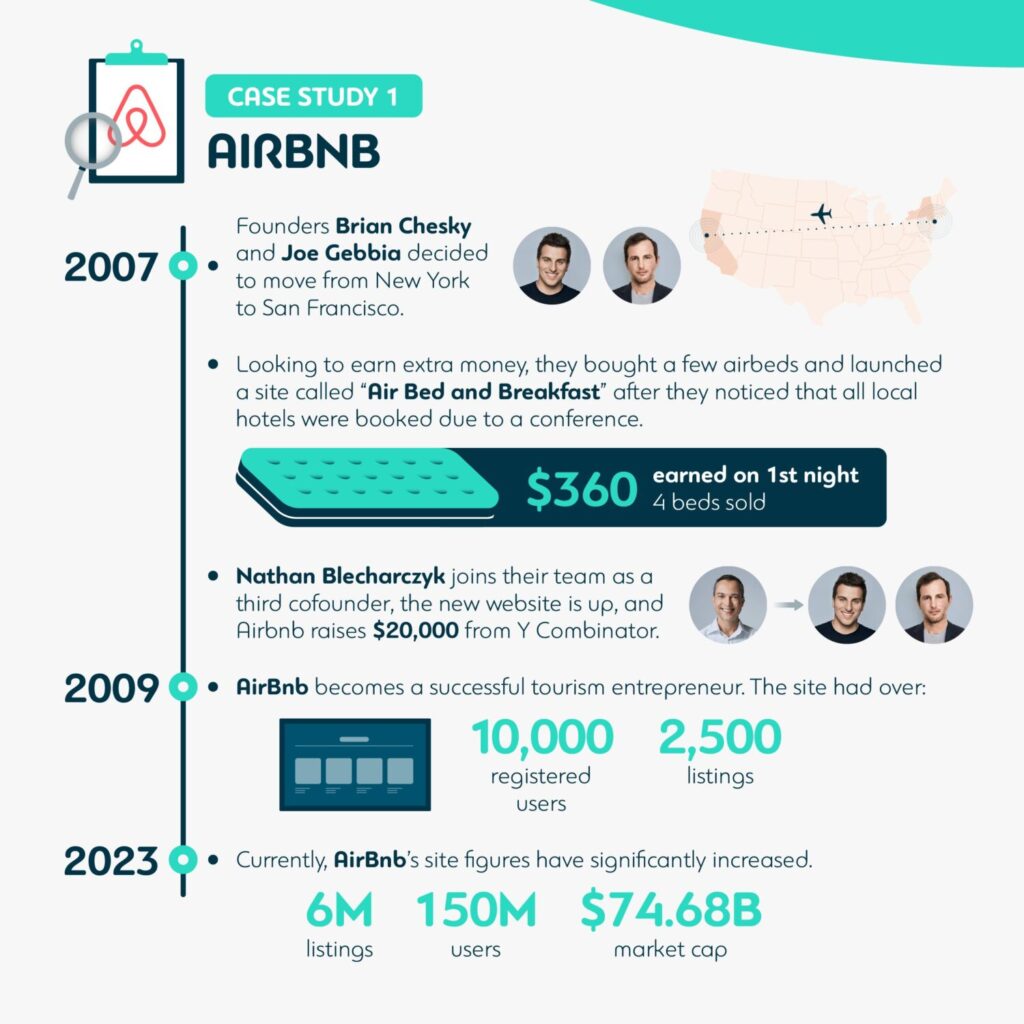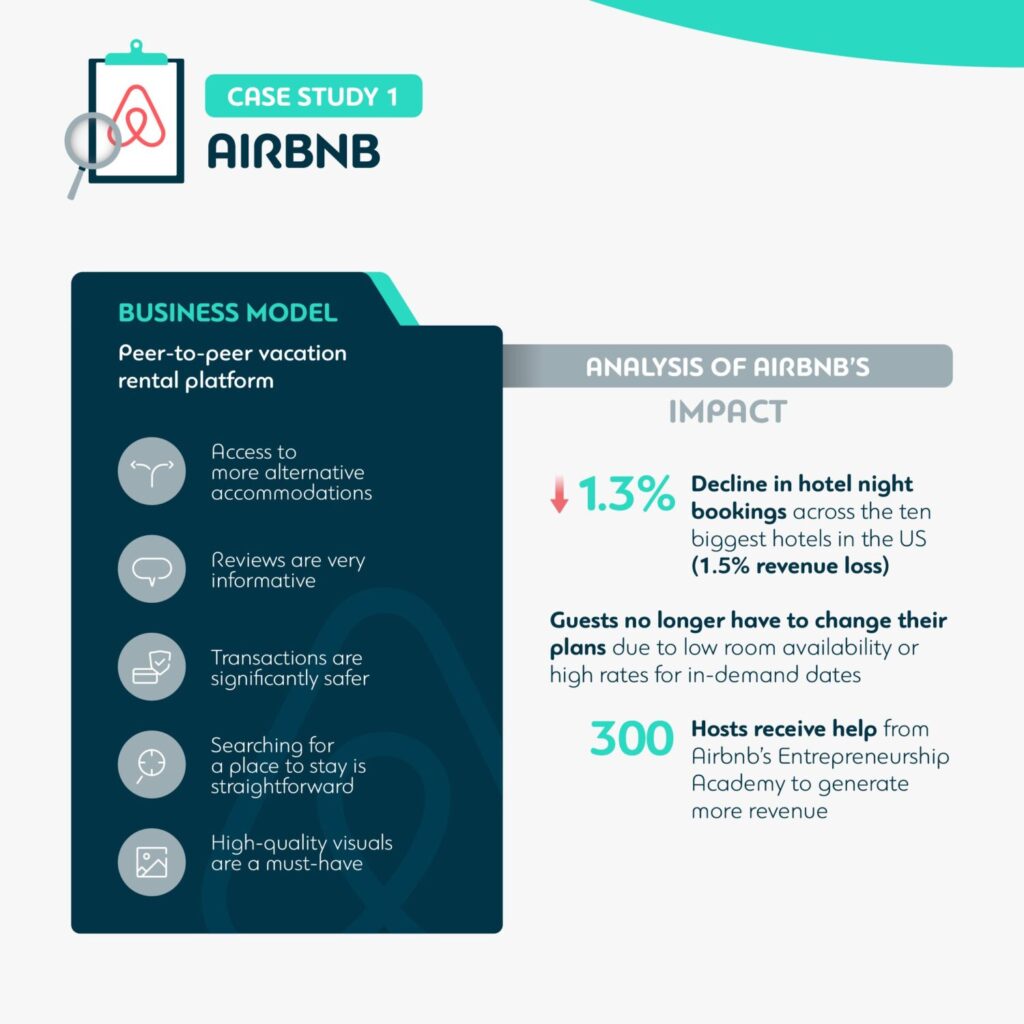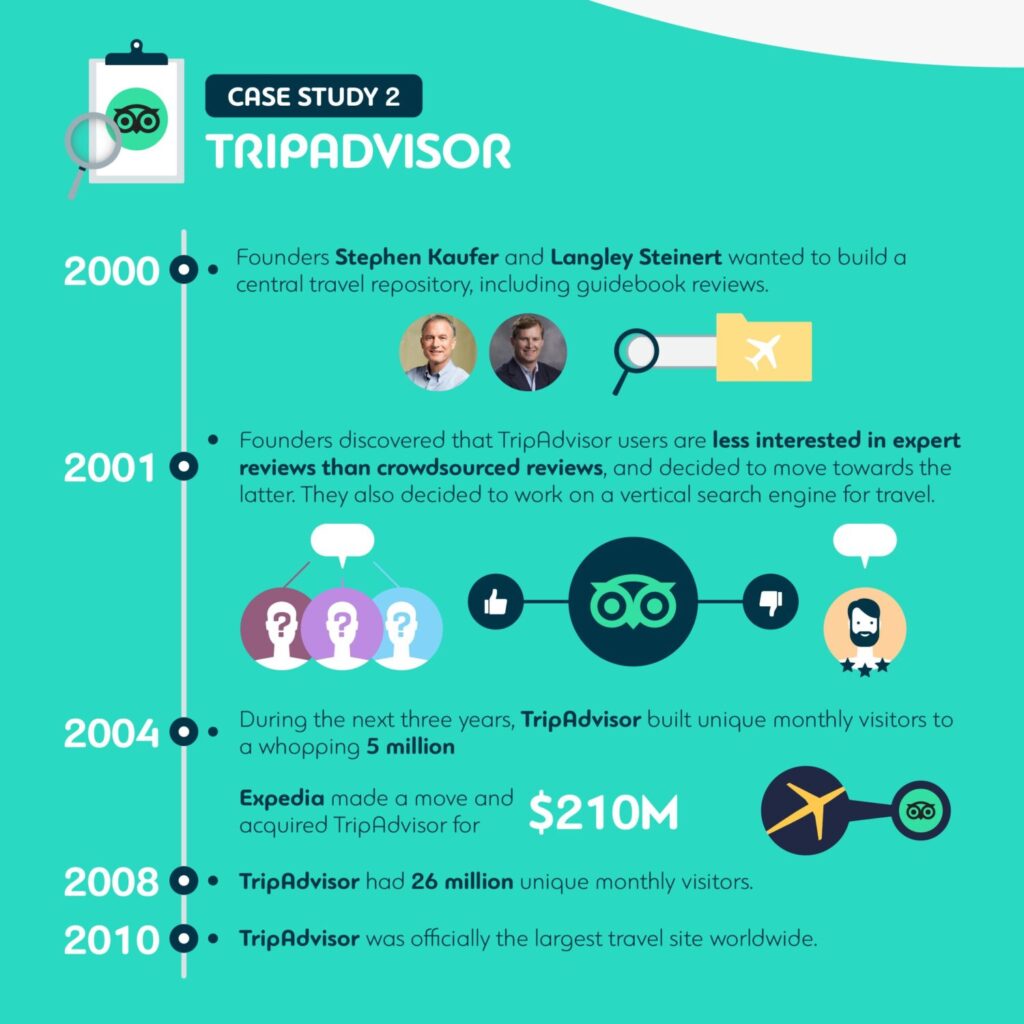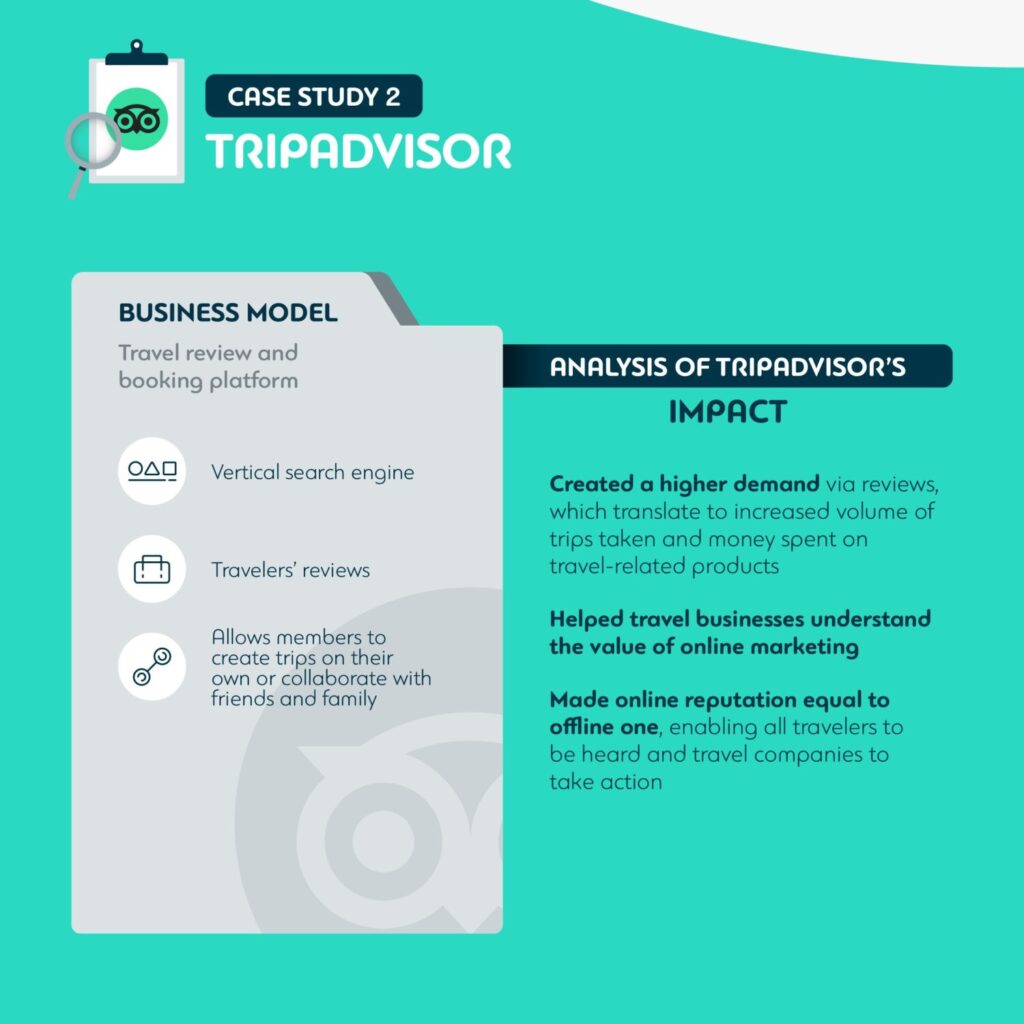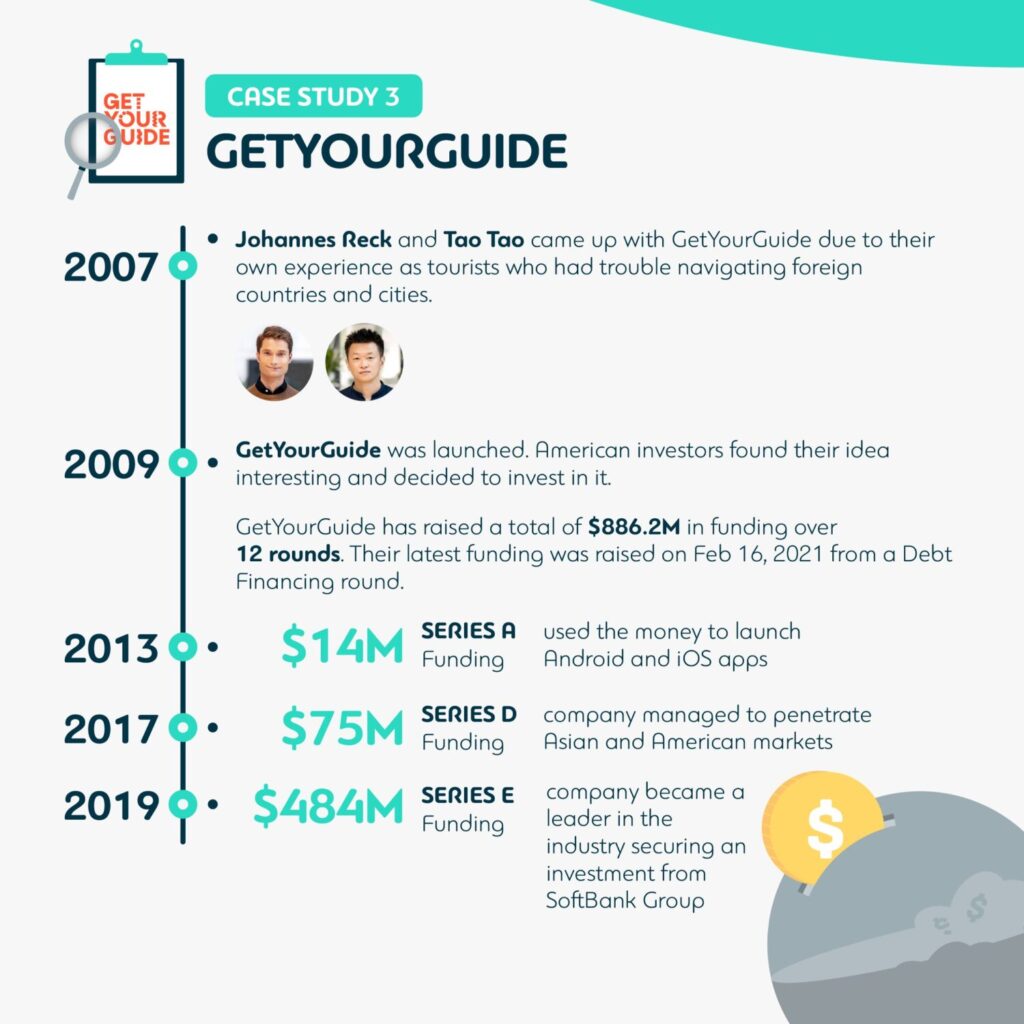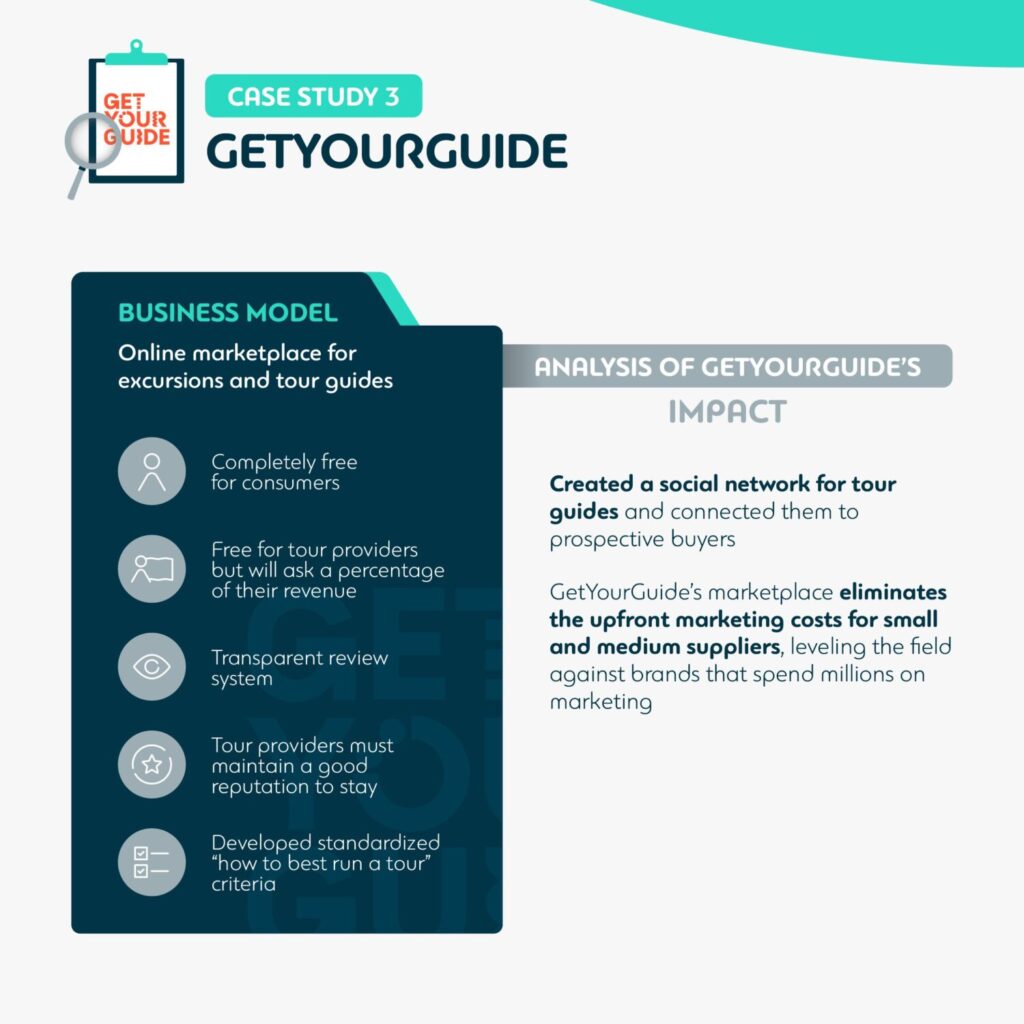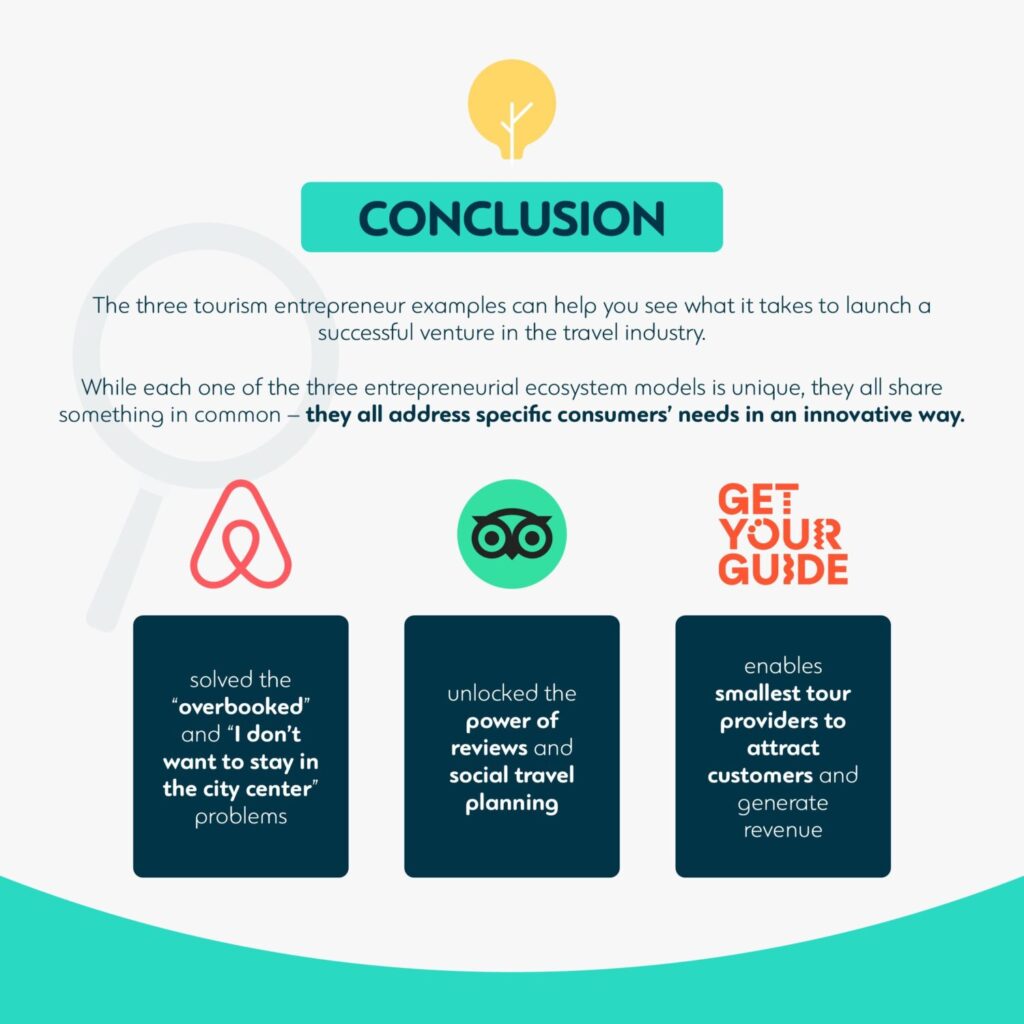3 Tourism Entrepreneur Examples To Inspire Your Goals

Tourism entrepreneurship refers to individuals or businesses developing numerous business activities, from activities and entertainment to accommodation and transport. Tourism entrepreneurship, as such, has a vital role in supporting the growth of the entire sector.
Recent research has found that it can not only eliminate societal problems but also facilitate a country’s development and fiscal growth, thus helping a country improve its GDP. Entrepreneurship is all about developing a business idea and launching a new business. For the travel sector, it translates to new businesses that leverage innovative solutions and technologies to accommodate modern consumers’ needs and expectations.
How do you become a successful tourism entrepreneur in the travel vertical? The best way is to learn from the great examples that have shaken the very foundations of the travel industry.
Below are three case studies: Airbnb, TripAdvisor, and GetYourGuide. Discover their unique histories, how they’ve become successful, and how they have impacted this vertical.
Case Study 1: Airbnb
Let’s start with one of the most prominent names in the travel industry – Airbnb. Here is how Airbnb started and changed the vacation rental industry.
Airbnb’s history and how it became a successful tourism entrepreneur
The Airbnb founder story is one of the niche’s most engaging stories. Airbnb founders Brian Chesky and Joe Gebbia decided to move from New York to San Francisco in 2007. At the time, they didn’t hold any jobs. They had to pay the rent, but they were running on fumes. While looking to earn extra money, they noticed that all the local hotels were booked due to the local conference.
Brian and Joe bought a few airbeds and launched a site called “Air Bed and Breakfast”. They sold four beds the first night and cashed in $360. The next thing, Nathan Blecharczyk joins their team as a third cofounder, the new website is up, and Airbnb raises $20,000 from Y Combinator. The founders were so dedicated to their businesses that, at one point, they invested in a quality camera to go door-to-door, take good photos, and add them to the listings.
It took the company two years to become a successful tourism entrepreneur. By 2009, the site had over 10,000 registered users and over 2,500 listings. Today, Airbnb has over 6 million listings, 150 million users, and a market cap of $74.68 billion.
Airbnb’s business model and how it changed the vacation rental industry
Airbnb’s business model was brand new, something the industry never saw before. Thanks to the new player in the niche, the entire vacation rental industry had to adapt. Here are the most noteworthy changes Airbnb imposed on the vacation rental sector:
- People now have access to more alternative accommodations – businesses in vacation rental used to focus only on popular neighborhoods. Thanks to Airbnb, the offer is now considerably bigger. Modern travelers who don’t like to be stuck in the central districts can now find accommodation across city neighborhoods;
- Reviews are very informative – back in the day, vacation rental sites were less informative than they are today, especially in the feedback department. Airbnb has helped make feedback more transparent and enable visitors to easily leave and read reviews;
- Transactions are significantly safer – before Airbnb, travelers didn’t have much comfort and security when paying for what-you-are-promised-you-get accommodation. Many vacation rentals use Airbnb’s model today – the service provider keeps the money until the stay is complete. Both parties need to be satisfied for the funds to be released;
- Searching for a place to stay is straightforward – Airbnb also made searching for a place to rent very simple. The search, which resembles the one on Booking.com, is now pretty much the standard in the sector;
- High-quality visuals are a must-have – finally, high-quality photos are also a standard today, thanks to Airbnb, which still offers professional photoshoot services to property owners who decide to list on their platform.
Analysis of Airbnb’s impact on the travel industry
Airbnb’s impact on the travel industry was quite substantial. According to research reports, the company caused a 1.3% decline in hotel night bookings across the ten biggest hotels in the US. It roughly translates into a 1.5% revenue loss for the hotels.
On the other hand, guests no longer have to change their plans due to low room availability or high rates for in-demand dates, which is good for the travel industry overall.
Airbnb’s Entrepreneurship Academy helped more than 300 hosts to generate more revenue, thus driving local economic development. One of the latest reports outlines that the brand has also helped facilitate the inclusive growth of tourism.
Case Study 2: TripAdvisor
The next tourism entrepreneur example is TripAdvisor – a go-to platform for many travelers interested in reviews, price comparisons, and an easy way to book an experience. Think Google but for the travel industry.
Overview of TripAdvisor’s history and how it became a successful tourism entrepreneur
TripAdvisor was founded back in 2000. It’s founders. Stephen Kaufer and Langley Steinert are Harvard graduates. They wanted to build a central travel repository, including guidebook reviews. That’s why the first version of TripAdvisor was more like a simple aggregator of travel-related products and curated reviews.
However, in 2001, the founders discovered that TripAdvisor users are less interested in expert reviews than crowdsourced reviews. At the same time, they decided to move towards crowdsourced reviews. The company also decided to work on a vertical search engine for travel. They ensured finances through a cost-per-click model.
The company managed to set up the field for ultimate success. During the next three years, TripAdvisor built unique monthly visitors to a whopping 5 million. In 2004, Expedia made a move and acquired TripAdvisor for $210 million. By 2008, TripAdvisor had 26 million unique monthly visitors. In 2010, it was officially the largest travel site worldwide.
TripAdvisor’s business model and how it revolutionized online travel planning
The vertical search engine and travelers’ reviews are the two core pillars of TripAdvisor’s business model. The company revolutionized online travel planning by introducing these two concepts into the online travel sector – and here’s how.
Consumers prefer personalized experiences over everything else. In fact, 91% of consumers love receiving personalized recommendations when planning a trip. Thanks to this new platform, all of a sudden, consumers had an opportunity to research and plan travel in a brand new way that was more engaging, informative, and rather straightforward.
TripAdvisor allows members to create trips on their own or collaborate with friends and family in doing so. They can create travel plans from A to Z and generate their own itineraries. While doing so, they can keep their plans private or publish them for other members to review them and leave their suggestions and recommendations.
Members who connect with friends and family on TripAdvisor can also see their reviews and easily discover what they recommend. The platform revolutionized online travel planning by turning it into a social experience. It even has some social media platform features such as “Like”, “Share”, and “Repost” to facilitate collaboration between members.
Analysis of TripAdvisor’s impact on the travel industry
The best way to assess the impact of tourism entrepreneurs on the travel and hospitality industry is to discover their effect on this particular economy. Here is how TripAdvisor affected this vertical:
- It created a higher demand – consumers enjoy reviews done by professionals and other travelers. The platform helped increase the volume of trips taken and money spent on travel-related products. Reviews also had a positive impact on the average spend per stay at a hotel and length of stay;
- It helped travel businesses understand the value of online marketing – with the ongoing expansion of the internet, online marketing has become increasingly important. TripAdvisor helped travel companies truly understand the value of driving quality targeted traffic. Its platform for Sponsored Placements enabled companies to see the power of well-placed relevant ads;
- It made online reputation equal to offline one – before, TripAdvisor travel brands were only concerned with maintaining offline reputation. However, TripAdvisor enabled all travelers to be heard online. Suddenly, travel companies had to pay attention to what their customers had to say online, acknowledge the problems, and find solutions to keep people coming back.
Case Study 3: GetYourGuide
The third tourism entrepreneur example you can learn from is GetYourGuide – the world’s leading online travel agency and marketplace specializing in excursions and tour guides.
GetYourGuide’s history and how it became a successful tourism entrepreneur
In 2007, GetYourGuide was just a great business idea that Johannes Reck and Tao Tao came up with. It came from their own experience as tourists who had trouble navigating foreign countries and cities. The core concept was to create an online platform to connect amateur guides with tourists.
With the help of relatives and parents, Johannes Reck and Tao Tao launched GetYourGuide in 2009. The American investors found their idea interesting and decided to invest in it. The real company growth followed the Series A funding worth $14 million. The founders used the money to launch Android and iOS apps. It helped them offer services to consumers and guides who preferred mobile over desktop platforms.
After the $75 million Series D funding, the company managed to penetrate Asian and American markets, which enabled it to stay the course of success. The company became a leader in the industry securing a $484 million investment from SoftBank Group.
GetYourGuide’s business model and how it disrupted the tours and activities industry
One of the reasons why GetYourGuide attracted the attention of investors from the US is the lack of competition. See, GetYourGuide offered something brand new to consumers. Here’s how its unique business model disrupted the paradigm of the tours and activities industry:
- Completely free for consumers – GetYourGuide introduced its services entirely free for consumers. In other words, you didn’t have to spend a dime to browse through tours and interact and book guides or excursions;
- The commission model – the providers of tours can use the platform for free as well. There are no upfront costs whatsoever. But, whenever they sell a tour, the providers have to pay a percentage of the revenue;
- Transparent review system – consumers’ reviews are entirely transparent on the platform. It enables consumers to assess the tour providers and make an informed choice. It resonated well with the target market, and reviews became crucial for tour providers;
- The penalty system – tour providers must maintain a good reputation to stay on the GetYourGuide marketplace. If they fail to do so and consistently get bed reviews, the platform automatically removes them;
- Developed standardized “how to best run a tour” criteria – the company used Big Data to outline the standardized criteria for the most optimal tour. Providers need to agree to follow the standardized criteria outlined to receive the GetOurGuide tour label.
GetYourGuide’s impact on the travel industry
GetYourGuide created a social network for tour guides and connected them to prospective buyers. Today, the company has offices in 14 countries and employs over 550 people. Over the last 12 years, the marketplace sold over 45 million tickets for excursions and tours. It helped make traveling more popular by removing the stress and hassle of finding niche tours in specific cities and neighborhoods.
Furthermore, GetYourGuide leveled the field for small suppliers who are up against brands that spend millions on marketing and lead generation across multiple channels. The marketplace simply eliminates the upfront marketing costs for small and medium suppliers.
Conclusion
The three tourism entrepreneur examples can help you see what it takes to launch a successful venture in the travel industry. While each one of the three entrepreneurial ecosystem models is unique, they all share something in common – they all address specific consumers’ needs in an innovative way.
Airbnb solved the “overbooked” and “I don’t want to stay in the city center” problems for travelers. TripAdvisor unlocked the power of reviews and social travel planning, while GetYourGuide enables even the smallest tour providers to attract customers and generate revenue.
The future looks bright for tourism entrepreneurs. The consumers’ behavior, needs, and expectations are never constant. Add rapid technology development to it, and you have plenty of space to brainstorm in and look for innovative ways to build or develop a business activity in the sector.
FAQ
You can become a successful tourism entrepreneur if you maintain passion, drive, and determination. Stay tuned to the latest developments in the industry and markets to identify the problem, get a clear vision, and develop a winning strategy. You can also learn a lot from studying the Daniel Isenberg Model of the startup ecosystem.
The most common challenges faced by tourism entrepreneurs include:
• Finding the right business partners;
• Efficient communication;
• Securing funds;
• Weak business plans and strategies;
• Lack of support from the government.
Tourism entrepreneurs often attend travel industry events and shows. OTAs can leverage this to approach entrepreneurs, discover best practices, and see if there is a way to secure collaboration.
Subscribe to
our newsletter
Yay! You are now
subscribed to our
newsletter
Mize is the leading hotel booking optimization solution in the world. With over 170 partners using our fintech products, Mize creates new extra profit for the hotel booking industry using its fully automated proprietary technology and has generated hundreds of millions of dollars in revenue across its suite of products for its partners. Mize was founded in 2016 with its headquarters in Tel Aviv and offices worldwide.
Related Posts
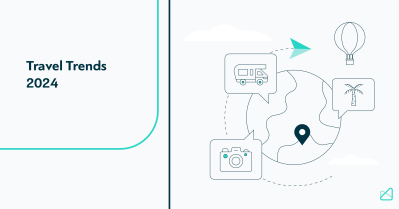
Unveiling the 13 Hottest Travel Trends of 2024
13 min. No one knows better than you how dynamic the realm of travel is. Dynamic shifts brought by technological strides, ever-changing traveler priorities, and global events are the new normal in 2024. How do you navigate this landscape that keeps transforming? You should familiarize yourself with the very travel trends that shape the world […]

30 Most Important Travel Industry Events for 2024
30 min. Many travel industry experts believe that travel industry events play a pivotal role in shaping the future of the travel industry. Why is this so? It’s because these events foster collaboration, networking, and innovation among key stakeholders in this vertical. As a platform for sharing best practices, trends, and insights, travel industry events […]

Empowering Equality: Mize Leads the Way in Travel Technology
7 min. Are we all equal? Are we all equally represented in the business world? In some professional sectors, there might still be some under-representation of women, minorities, and the LGBTQIA+ community. The tech sphere is no different, but is the travel tech sector a spark of hope? As the business world becomes more diverse, […]
